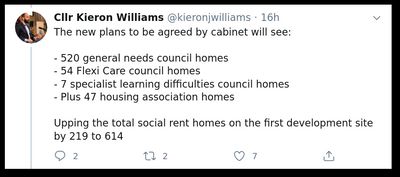
Southwark Council has announced that the First Development Site (FDS) of the Aylesbury estate regeneration will now deliver 581 council homes, increasing the number of social rented homes on the site by 280 units. The figures come from a Cabinet report to be considered on Tuesday 14 July. These will be the first new council homes on the regeneration.
Southwark will be paying for the new council homes, which will consist of 520 general needs, 54 flexi-care and 7 specialist learning homes, while Notting Hill Genesis will build them. This is a new 'arrangement' ; previously the homes were to have been built and paid for by Notting Hill Genesis, under the terms of a planning permission granted to Notting Hill Housing Trust, as it then was, in 2015. Southwark will pay £193m in development cost; it will also forego a further £17.8m in lost receipts from NHG, giving a total cost of £210.8m. Two GLA grants, totalling £54.5m, would bring the cost down to £156.3m [^1].
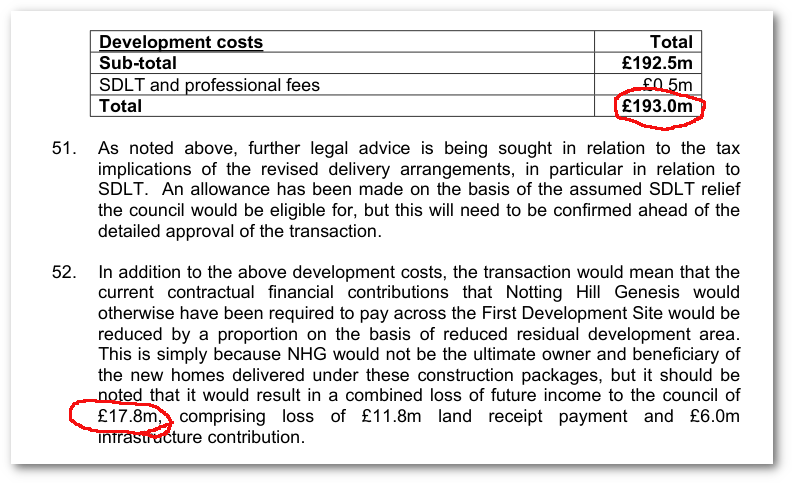 Extract from Tuesday's Cabinet report approving the decision
Extract from Tuesday's Cabinet report approving the decision
The good news
Understandably, Southwark councillors are making the most of the gain in council housing, which is undeniably good news. Local housing campaigners, both on and off the estate can also take credit - reducing the loss of social housing has been a consistent aim and at the centre of many hard-fought battles.
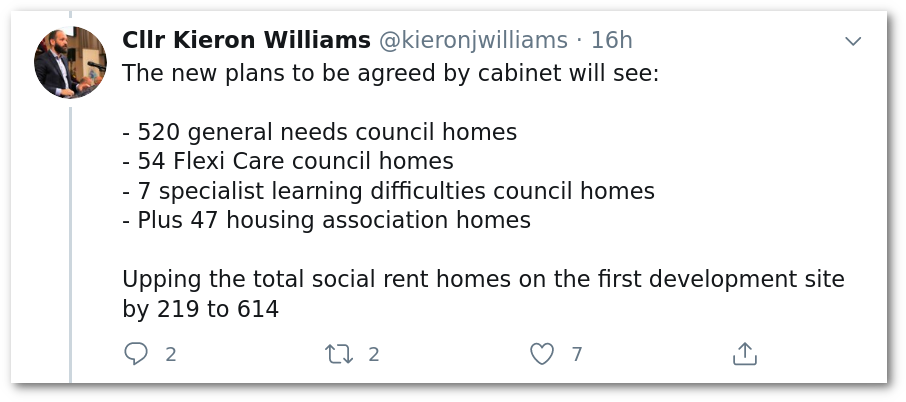
There are a couple of wrinkles though - a proportion of these social rented units will be needed to rehouse leaseholders decanted from later phases. How many remains to be seen - Phase 2 and 3 has 62 leaseholders yet to be bought out and their options include the new shared equity scheme introduced in response to the Secretary of State's CPO ruling that BAME leaseholders were being wrongly displaced from their communities [^2].
Also, the report is silent on whether the new council housing means that there will be a reduction in the net loss of social rented housing in the overall regeneration, or whether it is simply social housing being brought forward from later phases in the regeneration. The outline planning permission granted to NHG, who remain responsible for delivering the rest of the regeneration's 2,745 units, still allows for a net loss of between 778 and 1,166 social rented units [^3].
The not-so-good news
Southwark Council presents the cost of building the new council and other FDS homes as being a reasonable £238.4k per unit. Southwark arrives at this figure by assuming receipt of two GLA grants, reducing development costs from £193m to £138.5m.
But only one GLA grant has been secured and leaving the unsecured grant out of the equation and including the loss of £17.8m from NHG (for the land, and contributions to infrastructure costs) gives a total cost to Southwark of £182m and a less flattering cost per unit of £313k.
Neither of the above calculations, though, take properly into account the major fact that, under the existing delivery arrangements with NHG Southwark was to pay nothing for the housing, including the 240 social rented units; this was to be met by NHG.
So, while Southwark is now to get 581 council homes, instead of 301 social rented homes, this net gain requires an outlay of £193m gross - equivalent to £690k for each of the extra 280 units [^4].
NHG takes all the private housing
NHG also get to keep part of the FDS land, so-called Package C, on which to build 261 homes for themselves, most of which, 170 units, will be private homes. These units comprise all the private housing on the FDS. There will also be 57 shared ownership, and 34 social rent [^5].
NHG will also continue to build the homes on Plot 18, most of which are again private - 99 private homes, 6 shared ownership and 17 social rent. (This is despite the fact that it is no longer paying £6m towards Plot 18's community infrastructure) [^6].
This is all in stark contrast to the what NHG was supposed to deliver across the whole FDS under the Development Partnership Agreement (DPA) between Southwark and NHG, signed in 2014. Under the DPA, NHG was obliged to provide at least 50% affordable housing, 75% of which social rent - now this requirement has been abandoned [^7].
An explanation?
NHG therefore appear to be walking away unscathed from their FDS obligations and while Southwark are getting many welcome council homes, they are having to dig deep financially to pay for them. The Cabinet report notes a knock-on effect for future housing investment [^8].
An explanation for all this lies with the Development Partnership Agreement, which gives NHG an effective 'viability veto' on the progress of the regeneration. A DPA clause allows NHG to decide whether or not a particular plot or phase can proceed, depending on its viability. This viability test includes a 21% 'priority return' of revenue to NHG and is determined by their own assessment.

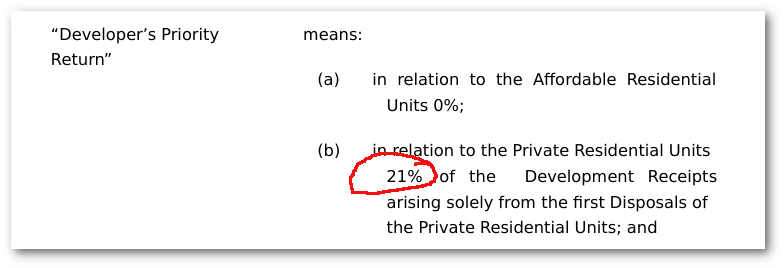
NHG's circumstances have also changed for the worse since it signed the DPA in 2014. It has been forced to 'significantly scale back' its development pipeline, after a Regulator of Social Housing report last August concluded NHG, with more than 400 unsold private market homes sitting on its books, “faces a range of risks and exposure to sales” .
Southwark, on the other hand, has invested heavily, both financially and politically, in delivering the Aylesbury regeneration. It has been decanting homes for nearly 10 years and now 500 or so stand empty, or are being used for temporary accommodation. The first FDS homes were supposed to have been completed this summer (a two-year delay on the original timetable), but much of the site is still rubble. Phase 2 is still not fully empty and no planning application has been submitted. Further delays can be expected for any compulsory purchase order and a demolition notice.
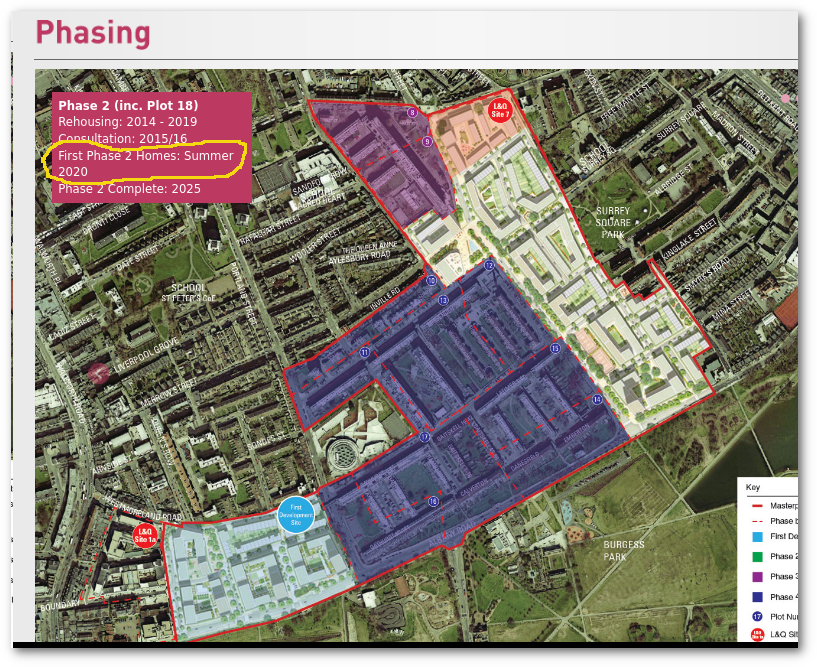
It is therefore not difficult to see why Southwark might have felt compelled to make concessions to NHG, by taking over the delivery and meeting the cost of nearly all the affordable housing, while leaving all the revenue-generating free-market homes to NHG.
NHG holds Southwark over a barrel - again
Southwark has been forced to make such concessions twice before. In September 2016, Southwark agreed to underwrite or advance £22.1 million to NHG, for the FDS demolition and design costs, including a payment of £16.8m for demolition, that was to have been paid by NHG. This advance funding was to be recouped by the FDS land receipt, which will now not be paid. The report agreeing this also noted that Southwark was due to spend £52.5m on the Aylesbury regeneration by 2018/19 [^9].

In 2018, NHG was awarded £30m of GLA grant funding for the first phase of the scheme. The Development Partnership Agreement set out that any grant funding awarded to the scheme should go to Southwark, such that it receives some kind of remuneration for the sale of its land (see para 4.1, page 111). But NHG forced Southwark to agree to a variation allowing it to pocket the entire £30m [^10].
What next?
Gaining 581 council homes is a boon for everyone in Southwark who depends upon social housing. Delivering these in the FDS phase also has the advantage that existing residents from later phases have a better chance of remaining on the Aylesbury.
But rescuing the Aylesbury regeneration is costing Southwark dearly. Southwark is plugging holes left by NHG's failure to deliver. Southwark is paying not just for council housing on its own account, but also for social rented housing that NHG should have paid for, and Southwark is doing this with money that could otherwise be spent on building more council housing elsewhere. Meantime NHG retains choice pieces of land, in the middle of the Aylesbury, to build nearly 270 private homes. No figures are given in Tuesday's cabinet report of how much NHG stand to make from this.
This is also not the first time Southwark have come to NHG's rescue. Southwark has also spent £101m keeping the estate habitable, while the regeneration stalls under NHG's stewardship [^11].
At least four of the DPA milestones haven't been met:
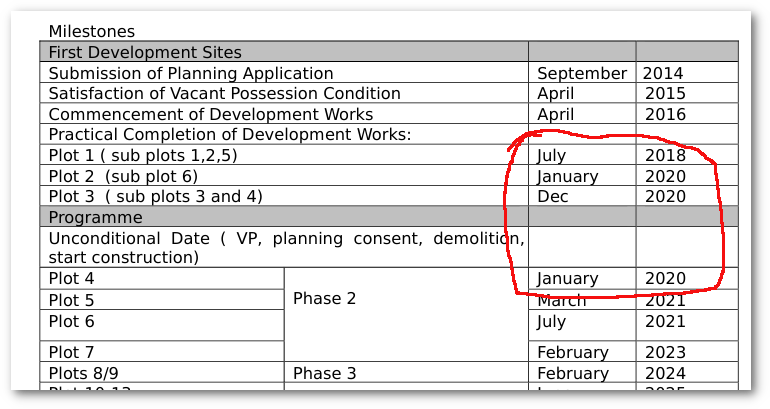
....and Southwark has the right to terminate the DPA if Notting Hill doesn't meet milestones:

There is also a clause that allows the Council to terminate 3 years after it was first found that a plot wasn't viable:

It would be a serious matter for Southwark to consider such a step, but given its past performance and its present circumstances it would be no surprise if NHG do not return, asking for more concessions and for more money. If this does happen, Southwark should take stock of the situation and consider whether this is the best use of its money.
Footnotes:
[^1]: Aylesbury Regeneration Programme: Delivery of new council homes on the First Development Site paras 52, 54.
[^2]: Aylesbury Regeneration Programme: Delivery of new council homes on the First Development Site para 23, 29
[^3]: Outline Planning Permission report 14/AP/3844 Table 14 para 97
[^4]: Aylesbury Regeneration Programme: Delivery of new council homes on the First Development Site para 50, 54
[^5]: Aylesbury Regeneration Programme: Delivery of new council homes on the First Development Site paras 55; S73 planning application Design Statement
[^6]: s73 Variation of Plot 18, 17/AP/3885 para 42; Aylesbury Regeneration Programme: Delivery of new council homes on the First Development Site para 53
[^7]: Development Partnership Agreement (DPA) Schedule 3 pg 83
[^8]: Aylesbury Regeneration Programme: Delivery of new council homes on the First Development Site para 64
[^9]: Aylesbury Regeneration Delivery para 16
[^10]: Evidence given at the The London Borough of Southwark (Aylesbury Estate Site 1b-1c) Compulsory Purchase Order 2014 Inquiry January 2018
[^11]: Aylesbury Regeneration Programme: Delivery of new council homes on the First Development Site para 15